The U.S. Government: Who, What, Where
Hello my fellow Americans! Many of you reading this have taken a class in American History. But let’s face it, that was a while ago. If you’ve been out of school for as long as I have (or even longer) your understanding of our government might have gotten a little fuzzy (which would be completely understandable). In this post, I’m going to run through a break down of the ol’ check’s and balances so that you can consider the upcoming election confidently.
1. The Constitution provided a separation of powers
Our forefathers wrote into the Constitution a model that divides the government into separate branches. Each of the branches have separate and independent powers. This balance helps to ensure that no one branch is more powerful than another. So basically, if one of them does something stupid, the other two are there to help balance them out and prevent permanent damage.
2. The Legislative Branch: Makes the Laws
This branch makes up Congress. Now, Congress is broken up into two parts: The Senate and The House of Representatives. In the Senate there are 100 members, since each state has 2. Below you’ll find a table that lists the Senate Leadership:
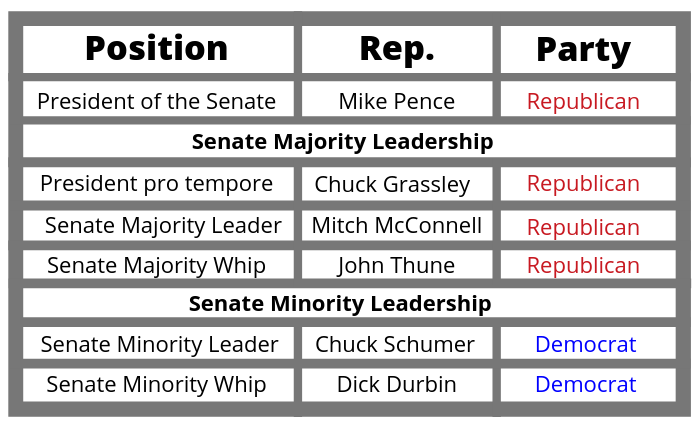
In the House, there are 435 members, and the number each state gets is based on state population. So basically, each state has a different number of representatives in the House. Here you’ll see a table that shows the House of Representatives leadership:
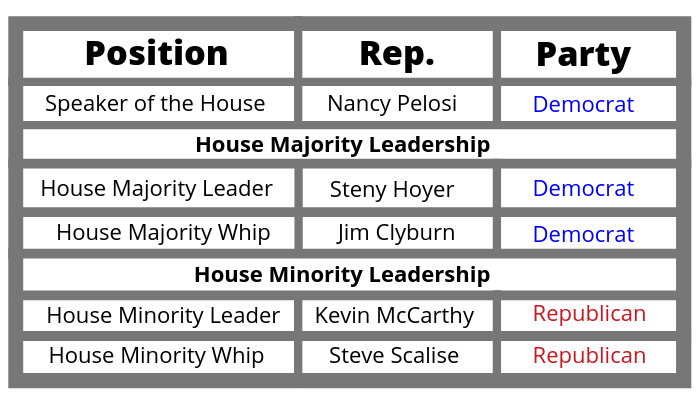
3. The Executive Branch: Carries out Laws
When you think of the Executive branch, you think of the President and the Vice President. However, inside this branch also lies the Cabinet, executive departments, independent agencies, and other boards, commissions, and committees. Out of those members, the two you’d be most concerned about (or would need to know) would be the President and Vice President. At this point, you probably know who the President and Vice President are:
- President: Donald Trump
- Vice President: Mike Pence
4. The Judicial Branch: Interprets Laws
Okay, this branch is made up of the Supreme Court and other Federal Courts. The Supreme Court has 9 members – a Chief Justice and 8 Associate Judges. Here are the current members of the Supreme Court:
- John G. Roberts (Chief Justice)
- Stephen G. Breyer
- Clarence Thomas Jr.
- Ruth Bader Ginsburg
- Samuel A. Alito
- Neil M. Gorsuch
- Sonia Sotomayor
- Elena Kagan
- Brett M. Kavanaugh
5) Checks & Balances
The three branches work together to ensure that no single branch can do anything too crazy. Here I’ll provide a brief explanation of how that works! The President can veto Congress’s legislation and nominates heads of federal agencies. Congress then has the authority to confirm or reject the presidents nominees. They can also remove the president from office, which would only happen in exceptional circumstances (you might know this as impeachment). The Justices of the Supreme Court can overturn unconstitutional laws, and they are nominated by the President and confirmed by the Senate.
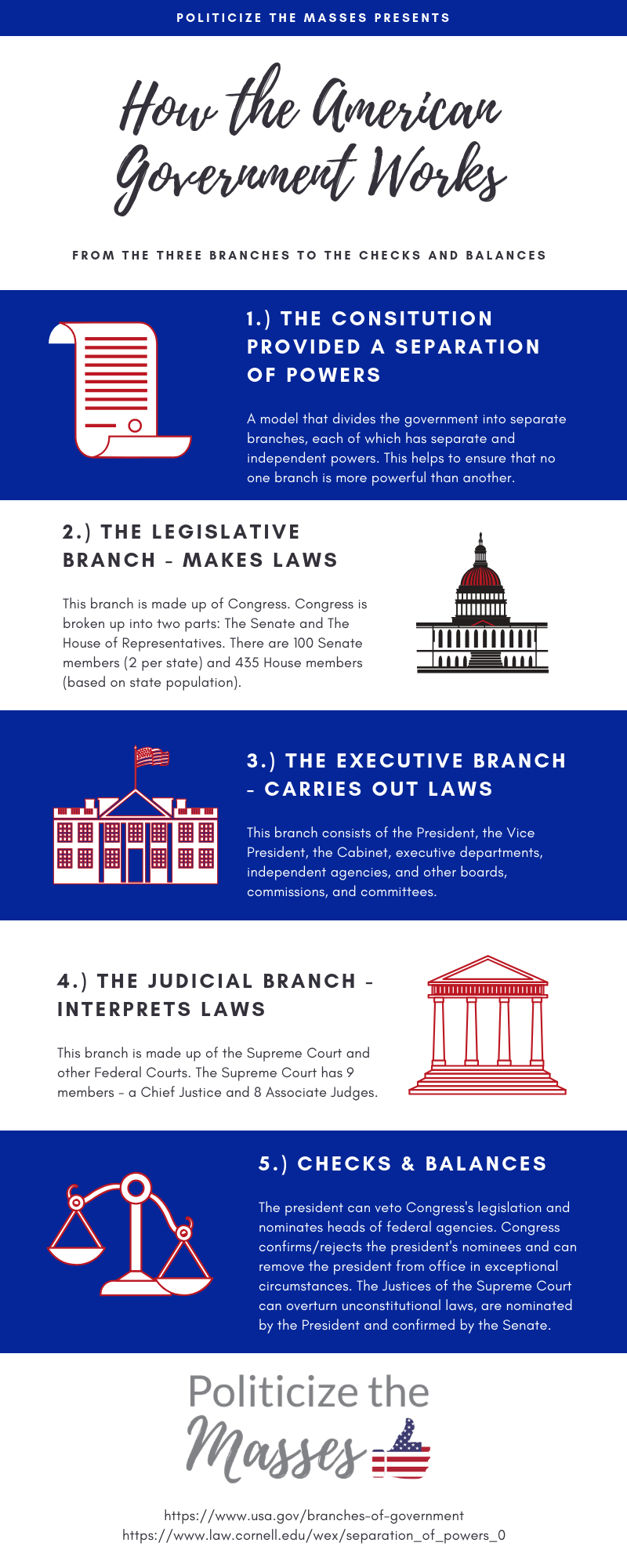
Sources:
You May Also Like
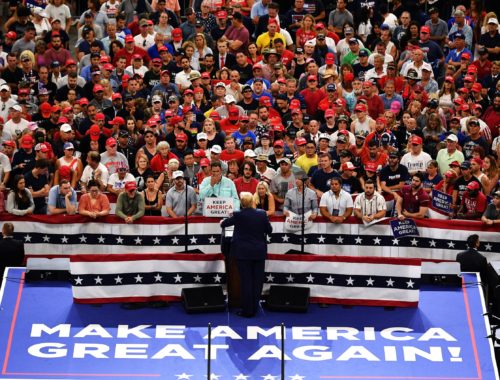
President Trump Did What He Does Best. Rally Up
June 23, 2019
It’s Debate Time….Part Two!
June 28, 2019
